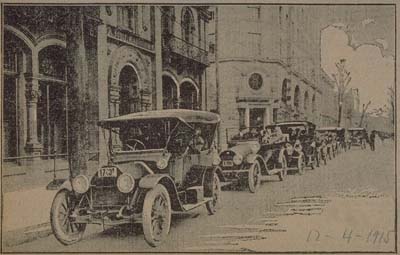Old Urbanism, New Urbanism
In the 1940s, my family lived in an apartment in East Orange with stores on the ground floor. Within mere steps, there was a deli, a butcher shop, a grocery, a laundry, my elementary school, a hardware store, newsstands, bus and trolley stops and my favorite corner store where I could get school supplies, comic books, milkshakes, candy and counter lunches. People sat on the back stoop in the evening. My mother walked to department stores on Central Avenue to buy our clothes and I bought little books and trinkets at the 5 & 10.
We had no car, no supermarkets and no malls.
Comments at a recent Board of Adjustment meeting made me realize, as the song goes, “Everything Old Is New Again.“
“Have you heard of the term, ‘New Urbanism?‘” Zoning Board attorney Richard Olive asked planning expert Michael Jovishoff.
Jovishoff was explaining why he felt a proposed 64-unit building a quarter-mile from Netherwood train station was the harbinger of transit-oriented development in Plainfield.
“Is that not where you can walk from your residence to businesses?” Olive pressed, asking whether Jovishoff had researched the retail uses within a quarter-mile of the proposed project.
Jovishoff knew the concept, but admitted he hadn’t studied the retail uses around the site at 803 South Avenue.
Olive was making a case for Board Chairwoman Sally Hughes’ suggestion that the applicant, Maxim Development Group, should consider having stores on the ground floor of the four-story building. In further questioning, he brought out the fact that examples of transit-oriented development in other towns did have either ground-floor stores or were in downtown districts full of stores.
Briefly, New Urbanism calls for residential development clustered with stores and community resources around transit hubs in such a way that a person would not need a car. For more details, see www.newurbanism.org or the Wikipedia entry on New Urbanism.
Porches are an important element and streets would foster outdoor cafes and places to sit.
“Green architecture” was another term Hughes used in asking developer Sal Carfaro whether he would consider solar panels and other alternatives to traditional energy uses.
It behooves Plainfielders to do a bit of homework on all these concepts, because the new administration is committed to transit-oriented development. Even if the Maxim project can’t get a use variance to build in an industrial area, all future development will likely have to meet the goals outlined in a two-page addendum to the Planning Division’s report on the Maxim proposal.
Olive would not allow the memo to be read into the record at the July 26 meeting, saying the whole report would have to be read aloud. But it is on file in the Planning Division and Plaintalker took a look.
The June 28 memo from Planning Director Bill Nierstedt notes that the transit village concept was showcased at a meeting for the 100-day report of Mayor Sharon Robinson-Briggs.
“The lynchpins (sic) of this new comprehensive plan are the revitalization of the four transit stops that once existed in Plainfield, and the adoption of smart growth, energy sustainable development standards for construction associated with high density Transit Village development,” Nierstedt wrote.
 The city has two existing train stations, Netherwood on South Avenue and the main station on North Avenue. Two others, at Grant and Clinton avenues, were demolished many years ago. Nierstedt said the city is not seeking to have them rebuilt by NJ Transit, but wants to revive the locations as transit hubs. Types of transit suggested for the two West End locations are cross county trolleys, light rail stations, bus/taxi/jitney/bicycle hubs or other related transit facilities.
The city has two existing train stations, Netherwood on South Avenue and the main station on North Avenue. Two others, at Grant and Clinton avenues, were demolished many years ago. Nierstedt said the city is not seeking to have them rebuilt by NJ Transit, but wants to revive the locations as transit hubs. Types of transit suggested for the two West End locations are cross county trolleys, light rail stations, bus/taxi/jitney/bicycle hubs or other related transit facilities.The hearing on the Maxim proposal will continue at 7 p.m. on Sept. 13 in City Hall Library, 515 Watchung Ave.
--Bernice Paglia


0 Comments:
Post a Comment
<< Home